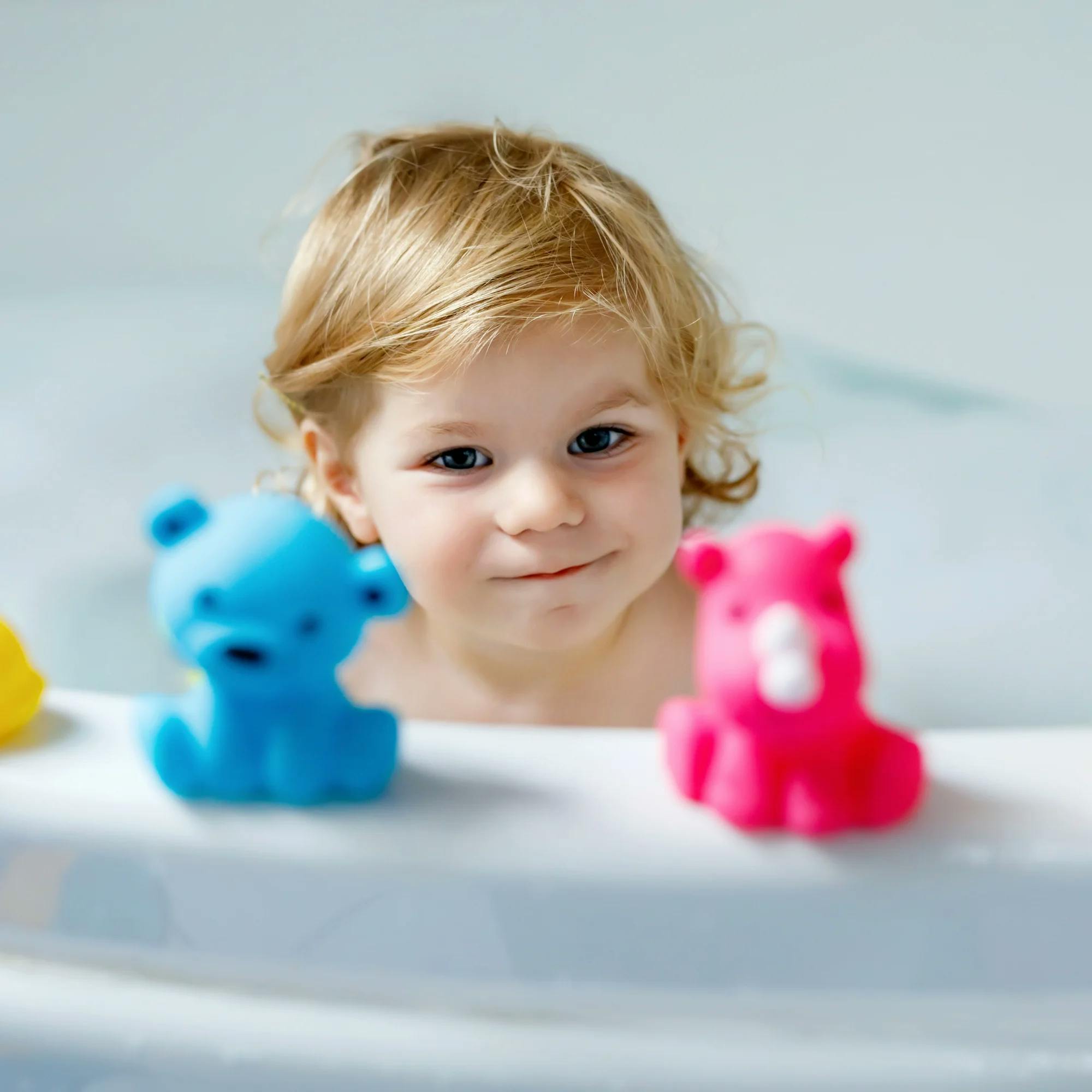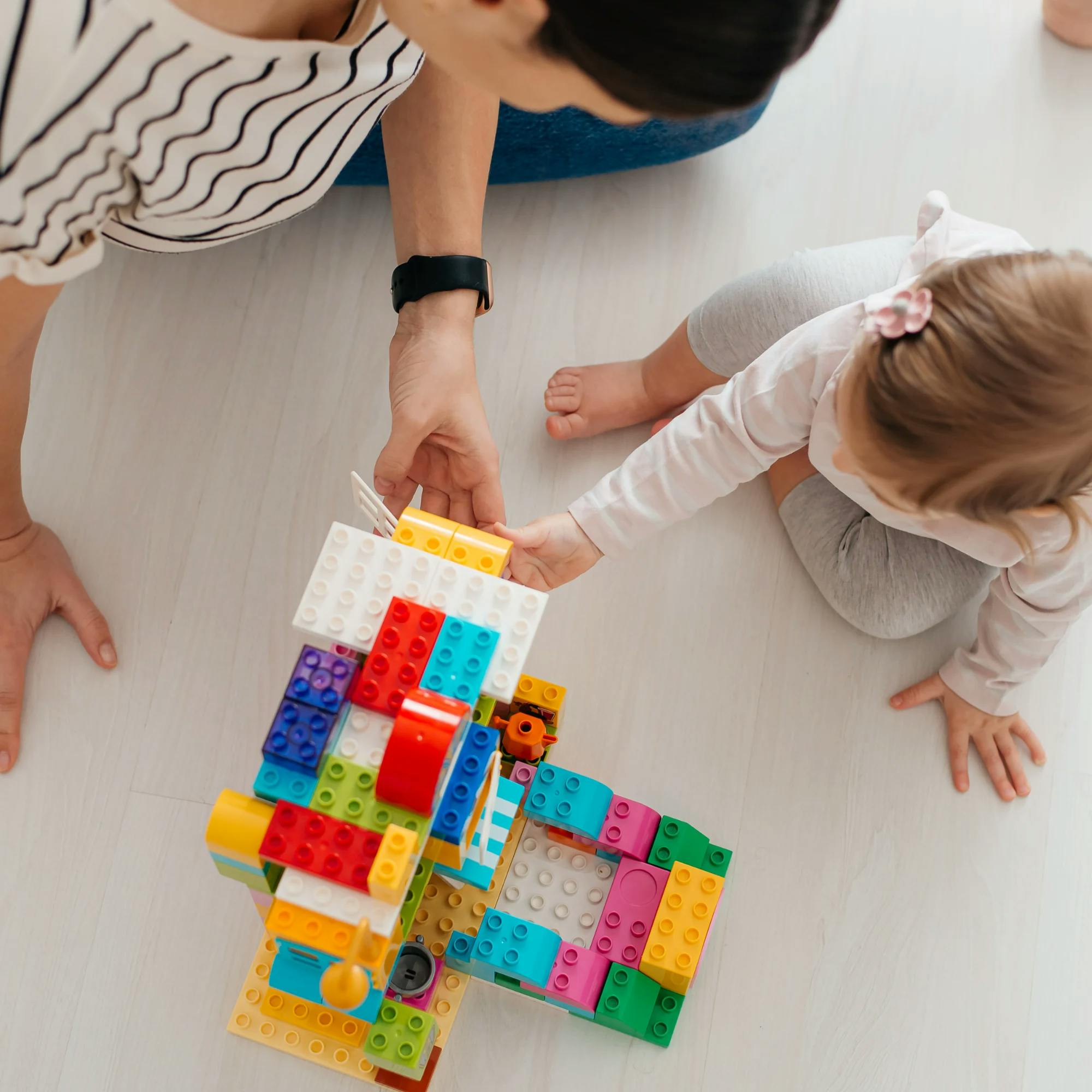
Using Play to Promote Speech and Language Development
 Leanne Sherred, M.S., CCC-SLP
Leanne Sherred, M.S., CCC-SLP
Play is an extremely important area of early childhood development, especially when it comes to growing speech and language skills. Play is how children learn and explore the world around them. That's why developing good play skills helps children increase their communication abilities.
In this article, we cover some basics about how play is linked to language development. You'll also find specific tips you can use at home to get your child on the road to communication success!
Knowledge is power
Take 5 minutes to check your child’s speech milestones with our free online screener.
 Start the screener
Start the screenerHow play is similar to communication
Did you know that playing mimics communicating?
Playing with others involves a back-and-forth exchange, just like a conversation. Rolling a ball or a toy car back and forth requires two people to complete the task. The same is true for communication! One person talks, the other responds, and so on.
Play also helps children learn cause-and-effect relationships. Here are two examples of cause-and-effect comprehension developed through play:
Blocks can stack, but if you push them over they will fall.
If you push a toy car, it will drive on the track where you want it to go.
Cause-and-effect comprehension is another important way that children increase their communication skills. When a child begins to use new words to communicate, this is essentially a cause-and-effect relationship: the child says a word, and then gets what they requested in return.
Lastly, joint attention is another aspect of play that correlates to communication. Joint attention is what happens when two people are focused on the same thing. Think about times you play and interact with your child. Do they ever give you a look or a smile as if to say, “Wow, did you see that?” That right there is joint attention. Purposeful engagement during play can't exist without joint attention. The same is true for purposeful communication.

How to grow your child's language skills through play
Check out these quick videos featuring our speech therapists! They demonstrate easy techniques for playing with your young child, using common objects and toys you likely have at home.
Here are some more easy ways to help your child grow their speech skills through play:
Use toys appropriately
It's essential that parents and caregivers help children learn how to play with toys appropriately. When children are infants, they may simply bang toys together or look at them. However, as they grow older, they should begin to use toys for their intended purpose.
Here's an example. When given a toy spoon and a bowl, we want children to learn how these two objects go together. They can pretend to mix the spoon in the bowl, or sip the spoon as if they're eating soup.
Playing appropriately with toys also helps children gain imaginative play skills. As children get older, they can then pretend to do things like make food, build castles out of blocks, become their favorite character--the opportunities are endless!
Playing appropriately with toys helps children gain imaginative play skills.
Once their imagination gets going, this opens the door for them to talk about what they're doing. There is much more a child can comment on during imaginative play. For example, when they play with pretend food or put on a "tea party," they can pretend to feed their stuffed animals or baby dolls. They may verbalize things like, “Yum!” or “Eat!”
More frequent and imaginative play increases the opportunity for children to say more words. That’s why it's so important to play together daily!
Help your child make sounds and say words as they play
When playing with your child, it's important to look for chances to practice sound and word productions. If you have toy animals available, help your child imitate the sound each animal makes. If you're playing with toy cars or trucks, have them imitate sounds like “Vroom!” and “Beep! Beep!”
Also, make sure to talk to your child frequently during play. Ask questions in order to help your child label the toys and objects they're playing with.
If your child isn't at the point of labeling objects on their own quite yet, focus on having them imitate the word, or even the initial sound of the word. For example, if your child is playing with the ball, then model “ball” or “b-b-b” to see what they will imitate.
Build receptive language skills
Before children can independently use words, they first have to understand the meaning of the words. Simple play activities are a great way to target these receptive language skills!
You can ask your child questions that require a nonverbal response in order to build receptive language vocabulary. Here are a few examples:
When playing with toy animals, ask identification questions like, “Where is the horse?”
If playing with colored blocks, you could say, “Show me the yellow block” to target color identification.
You can even target comprehension of descriptive words such as, “Where is the little car?” or "Where is the big car?”
The more familiar your child gets with different words, the more likely they will be to use them.
Find the right speech therapist for your child
We'll match you with a licensed speech therapist who's experienced in your child's needs and available when you are.
 Get started
Get startedLet your child choose what to play
To keep kids engaged in play, it's important to follow their lead. Let them explore different toys and see what draws their attention. Use whatever toy or object they select to target their speech and language goals.
It may not always be possible to let the child pick the activity. But when you can, go with your child’s choice. They'll be much more likely to participate when you're targeting speech by using toys that are fun and meaningful to them.
What if your child seems to be delayed?
If your child’s language doesn’t seem to develop at the rate you expect, even with a focus on purposeful play, check out this article for an overview of speech-language milestones and when to consider speech therapy. The earlier your child gets the help and support they need, the faster they'll make progress!
How Expressable Can Help
Concerned your child isn't reaching age-expected milestones? Looking for communication support from a professional? Expressable is a national online speech therapy practice serving children and adults. We treat all major areas of communication and feeding, offer flexible hours including evenings and weekends, and accept most major health insurance plans. We’re proud to have earned more than 3,000 5-star reviews from our clients (4.9/5 average).
Our therapy model is centered on parent and caregiver involvement. Research proves that empowering caregivers to participate in their loved one’s therapy leads to better outcomes. That’s why we combine live, 1-on-1 speech therapy with personalized education and home practice activities for faster progress.
Communication is more than words. It’s how we share how we feel and show who we are. We’re here to help you or your child do just that.












